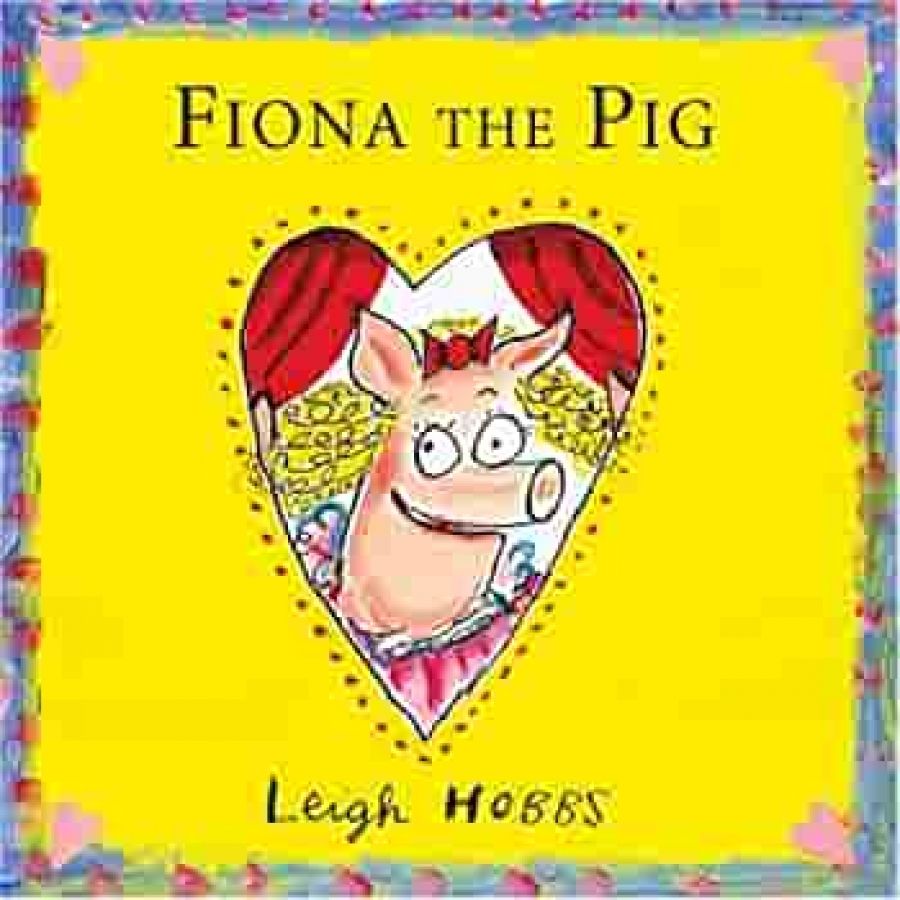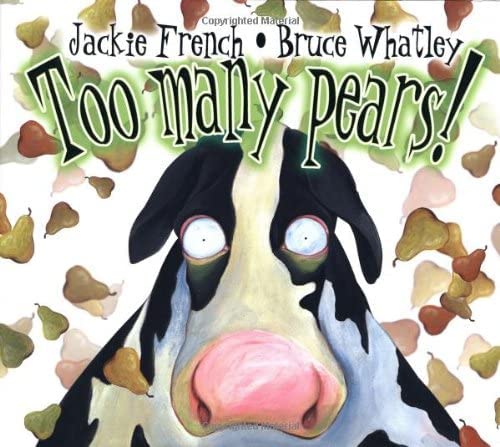
- Free Article: No
- Contents Category: Children's Fiction
- Review Article: Yes
- Article Title: Animal farm
- Online Only: No
- Custom Highlight Text:
Where would the picture book industry be without animals? Talking or non-speaking, cute or obnoxious, mischievously alive or poignantly dying, animal characters can be utilised to teach life lessons, and to make complex issues accessible and less confronting for young children. Add humour, passion and strong original writing, and you have a winner.
- Book 1 Title: Fiona the Pig
- Book 1 Biblio: Penguin, $24.95 hb, 32 pp
- Book 2 Title: Too Many Pears!
- Book 2 Biblio: Koala Books, $24.95 hb, 32 pp
- Book 2 Cover Small (400 x 600):

The team that delighted readers last year with the best-selling Diary of a Wombat are back, this time with the salutary story of Pamela, a cow who simply doesn’t know when she’s eaten Too Many Pears! It’s a big worry for the farm family as their orchard is raided and Pamela evades all attempts to limit her consumption of her favourite fruit. But clever Amy comes up with a solution – one that will be familiar to any chocoholic who has ever worked in a chocolate factory.
This is a great book for beginning readers. There’s a generous use of white space, and the text is large and clear. Most importantly, Jackie French tells the story in simple sentences, utilising a vocabulary of little more than eighty words and with a fine use of repetition and rhythm (‘Pamela liked pears. Pamela liked fresh pears. She liked pears even more than Amy did!’). Bruce Whatley’s illustrations are amusing, often hilarious, and always reinforce the text. Pamela’s hugeness, so important in the light of her eventual pear consumption, is wonderfully conveyed across double-page spreads, as is her progression from greedy enjoyment to bloated gluttony. And the wombat makes a guest appearance.
Wolf’s Sunday Dinner is a potentially scary tale about a big bad wolf trying to fatten up a skinny little goose – ‘a teeny, tiny excuse for a goose’ – as his next meal. It’s possible that some younger readers will find images of open jaws and slobbery fangs in close proximity to baby innocence upsetting. However, Greg Holfeld’s energetic, cartoon-like illustrations, and the fact that this is a particularly dim-witted wolf, serve to undercut the fright. Most readers, safe in the knowledge that the naïve little victim must eventually triumph, will enjoy being frightened (although some might wonder how any responsible mother could displace her baby for so long). The typography mimics the action as Tania Cox’s words ‘slip, slide, slam’, ‘clink, clunk, clonk’ and ‘trip, tumble, thud’ across the pages, and there’s a satisfying use of repetition. The story ends with a clever twist, made even more effective by the page turns.
Why is Sarah’s adopted cat Trumpet getting bigger and bigger? When the vet gives his diagnosis, no reader will be as surprised as Sarah: the title Trumpet’s Kittens and the blurb have already given the game away. But she might well be surprised. Sarah has long wanted a cat of her own, and takes in Trumpet when her owners move. Perhaps they didn’t know that their cat was pregnant, but they must have been aware that it hadn’t been desexed. Poor Sarah! Wanting only one cat and now burdened with five. Nobody in the story seems to mind, but I’d have liked an alternative last page: ‘And as soon as possible, Sarah took Trumpet back to the vet and had her neutered.’
Still, Trumpet’s Kittens is a gorgeous-looking book and a credit to FACP’s in-house designer and illustrator, Marion Duke. From its slip-cover and musical score endpapers to the rich earthy colours that echo Trumpet’s own shadings and evoke the warmth of home and family life, this is a book to read again and again. (It’s a pity the print is so small.)
Baby Boomsticks isn’t an animal character, but perhaps he should have been. It’s hard to believe the award-winning Margaret Wild is responsible for this tale of a ‘teeny-tiny’ baby who outgrows his teeny-tiny parents to become a big, jolly baby. When he’s rejected on safety grounds as a playmate for the teeny-tiny village children – understandable, surely? – BB stops chuckling. Even if you’re not familiar with the old playground taunt of ‘Fatty Fatty Boomsticks!’, the photo-realism of Legge’s illustrations makes it clear that this is a fat baby. Presumably, the aim was to deliver a gentle lesson in dealing positively with difference, but the writing is twee and the premise shaky. The villagers only accept BB when he becomes useful to them, first by carrying them to safety from a flood (which he has inadvertently caused) and thereafter acting as a sort of extra playground fixture (all safety considerations now disregarded). ‘Baby Boomsticks was jolly once more … he laughed as merrily as the babbling brook … and as jubilantly as the church bells!’ Oh dear.


Comments powered by CComment